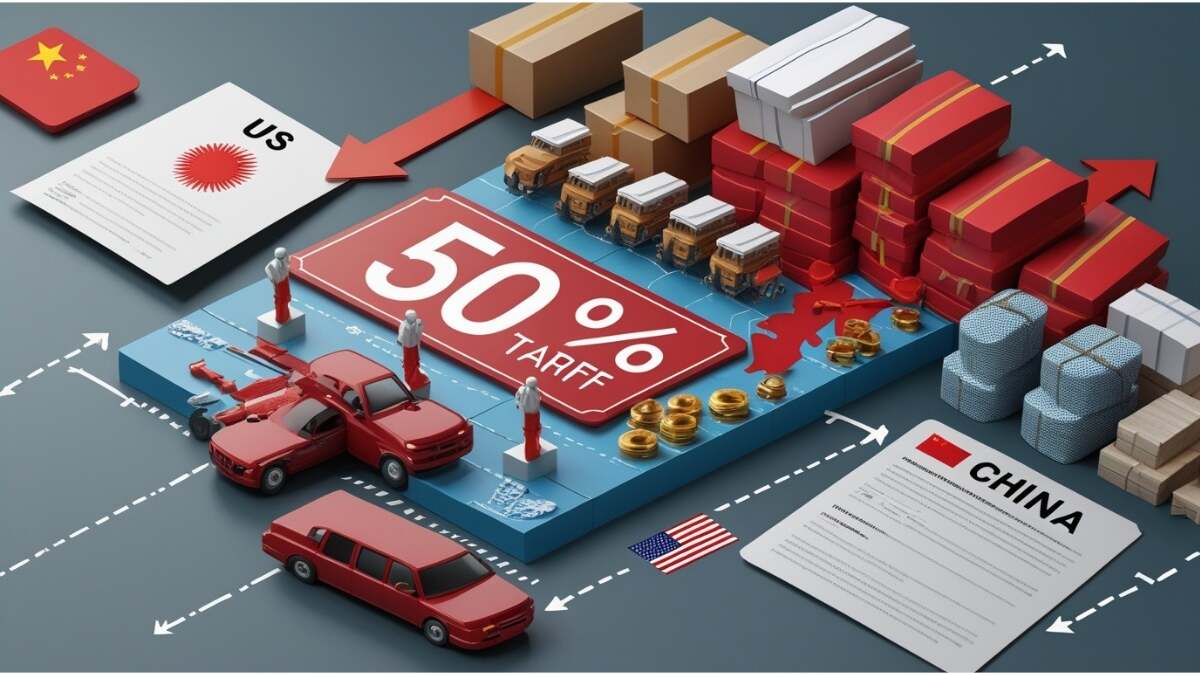As tensions increase, China labels the US’ 50% tax on Indian imports “unfair and unjustified.” As Washington and New Delhi dispute over Russian energy and economic relations, experts think Beijing stands to gain.
After Washington imposed a 50% levy on Indian goods, China accused the US of “weaponizing tariffs,” intensifying a trade spat that may potentially reshape supply chains across Asia.
Chinese Ambassador Xu Feihong described the action as “unfair and unjust” when speaking in New Delhi, despite experts speculating that Beijing would covertly profit from the growing distance between Washington and New Delhi.
China demands more collaboration between India and China
Additionally, Ambassador Xu emphasized the significance of China-India bilateral cooperation, stating that the two major growing economies should “prioritize growth and nurture mutual support and success.”
He referenced quotes from Indian Prime Minister Narendra Modi and Chinese President Xi Jinping, stating that Modi has said that “India-China collaboration would make the 21st century a truly Asian century,” according to the South China Morning Post.
The origins of the 50% tariff
Two rounds of US trade restrictions led to the 50% tariff. According to Reuters, the US first levied a reciprocal 25% duty on a number of Indian exports. India’s ongoing purchases of Russian crude oil prompted the imposition of an additional 25% penalty tax, increasing the effective duty rate on impacted Indian exports to 50%, according to Reuters and The Guardian.
According to Reuters, the industries most impacted include clothing, jewelry and gems, footwear, recreational goods, furniture, and chemicals.
US tariffs’ economic effects on India
According to The Guardian and Reuters, India’s exporting industries are suffering from severe competitive disadvantages, especially in labor-intensive industries like textiles, jewelry, footwear, and leather.
Analysts predict that these industries’ exports to the US may decline by as much as 70%, and the tariff regime has also sparked worries about India’s long-term investment climate.
According to some projections, the actions may reduce India’s GDP growth by 0.8 percentage points this fiscal year, according to Reuters.
Does the feud help China?
In the midst of the US-India trade dispute, China seems to be gaining a relative edge. The South China Morning Post claims that Beijing has enhanced its reputation as a supporter of free trade and multilateralism by openly defending India against what it portrays as US protectionism.
According to The Economic Times, certain Indian goods that are no longer as competitive in the US may instead find consumers in China or in areas where China already has close trading ties.
According to Moneycontrol, India’s strategic view of the punitive US tariffs may lead it to change alliances and trade, which might provide China with chances to increase imports and fortify collaboration.
Furthermore, compared to India, China has become more resilient to trade disputes, which makes such shocks less disruptive, according to the China Leadership website.
Possible dangers to China
China still faces difficulties despite its relative advances. While supply chain interruptions and inflationary pressures may have an effect on Chinese companies, global trade disruptions affect all significant exporters.
Furthermore, there are diplomatic dangers associated with publicly criticizing US policies since Washington, DC may take countermeasures.
What may happen to the geopolitical tension between the US, China, and India next?
According to Reuters, there is speculation that the US may lower certain charges, especially the 25% penalty penalties. It is probable that India would expedite its endeavors to broaden its export markets and execute changes to enhance its competitiveness. Exporters may get domestic support in the form of subsidies, tax breaks, or logistical help.

